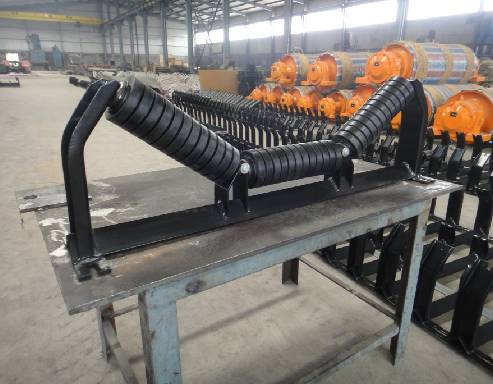 Afrikaans
Afrikaans  Albanian
Albanian  Amharic
Amharic  Arabic
Arabic  Armenian
Armenian  Azerbaijani
Azerbaijani  Basque
Basque  Belarusian
Belarusian  Bengali
Bengali  Bosnian
Bosnian  Bulgarian
Bulgarian  Catalan
Catalan  Cebuano
Cebuano  Corsican
Corsican  Croatian
Croatian  Czech
Czech  Danish
Danish  Dutch
Dutch  English
English  Esperanto
Esperanto  Estonian
Estonian  Finnish
Finnish  French
French  Frisian
Frisian  Galician
Galician  Georgian
Georgian  German
German  Greek
Greek  Gujarati
Gujarati  Haitian Creole
Haitian Creole  hausa
hausa  hawaiian
hawaiian  Hebrew
Hebrew  Hindi
Hindi  Miao
Miao  Hungarian
Hungarian  Icelandic
Icelandic  igbo
igbo  Indonesian
Indonesian  irish
irish  Italian
Italian  Japanese
Japanese  Javanese
Javanese  Kannada
Kannada  kazakh
kazakh  Khmer
Khmer  Rwandese
Rwandese  Korean
Korean  Kurdish
Kurdish  Kyrgyz
Kyrgyz  Lao
Lao  Latin
Latin  Latvian
Latvian  Lithuanian
Lithuanian  Luxembourgish
Luxembourgish  Macedonian
Macedonian  Malgashi
Malgashi  Malay
Malay  Malayalam
Malayalam  Maltese
Maltese  Maori
Maori  Marathi
Marathi  Mongolian
Mongolian  Myanmar
Myanmar  Nepali
Nepali  Norwegian
Norwegian  Norwegian
Norwegian  Occitan
Occitan  Pashto
Pashto  Persian
Persian  Polish
Polish  Portuguese
Portuguese  Punjabi
Punjabi  Romanian
Romanian  Russian
Russian  Samoan
Samoan  Scottish Gaelic
Scottish Gaelic  Serbian
Serbian  Sesotho
Sesotho  Shona
Shona  Sindhi
Sindhi  Sinhala
Sinhala  Slovak
Slovak  Slovenian
Slovenian  Somali
Somali  Spanish
Spanish  Sundanese
Sundanese  Swahili
Swahili  Swedish
Swedish  Tagalog
Tagalog  Tajik
Tajik  Tamil
Tamil  Tatar
Tatar  Telugu
Telugu  Thai
Thai  Turkish
Turkish  Turkmen
Turkmen  Ukrainian
Ukrainian  Urdu
Urdu  Uighur
Uighur  Uzbek
Uzbek  Vietnamese
Vietnamese  Welsh
Welsh  Bantu
Bantu  Yiddish
Yiddish  Yoruba
Yoruba  Zulu
Zulu Feb . 10, 2025 09:51
Back to list
types of pulleys in belt conveyor
Pulleys play a critical role in belt conveyor systems. As a backbone for various industries ranging from mining to agriculture, pulleys deserve more than just a passing mention. Each type of pulley used in belt conveyors contributes uniquely to the system's efficiency, reliability, and functionality. This article provides a comprehensive exploration of the various types of pulleys used in belt conveyors, offering new insights and perspectives that will enhance your understanding.
Bend Pulleys Serving dual functions, bend pulleys guide the belt in a particular direction while also adjusting the belt tension as needed. They are often employed in longer conveyor systems where there's a need to alter the belt path or navigate around obstacles. By adjusting the belt path, bend pulleys can optimize speed, improve tracking, and reduce wear on other components. Take-Up Pulleys As the name suggests, take-up pulleys are central to preserving the correct tension in the conveyor belt. With systems employing automatic tensioners, these pulleys are integral in self-regulating the tension, thereby enhancing performance and preventing slippage. This makes them a linchpin in both short and long conveyor systems, affording reliability and durability in continuous operations. Tail Pulleys Tail pulleys are located at the end of the conveyor system and serve dual functionalities they change the direction of the belt and also act as a drop-off point for conveyor materials. Their location in the system requires them to endure significant amounts of force, so they are usually robustly constructed to withstand daily operational demands. In conclusion, understanding these different types of pulleys — drum, wing, dead shaft, snub, bend, take-up, and tail — is vital for optimizing a belt conveyor system's function. Each pulley type serves a distinct purpose, working in harmony to ensure efficient material handling, reduced wear and tear, and minimized maintenance requirements. Proper selection and maintenance of conveyor pulleys will not only enhance the longevity of your conveyor systems but also drive productivity and profitability across industry operations, solidifying your reputation as a leader in efficient materials handling technology.


Bend Pulleys Serving dual functions, bend pulleys guide the belt in a particular direction while also adjusting the belt tension as needed. They are often employed in longer conveyor systems where there's a need to alter the belt path or navigate around obstacles. By adjusting the belt path, bend pulleys can optimize speed, improve tracking, and reduce wear on other components. Take-Up Pulleys As the name suggests, take-up pulleys are central to preserving the correct tension in the conveyor belt. With systems employing automatic tensioners, these pulleys are integral in self-regulating the tension, thereby enhancing performance and preventing slippage. This makes them a linchpin in both short and long conveyor systems, affording reliability and durability in continuous operations. Tail Pulleys Tail pulleys are located at the end of the conveyor system and serve dual functionalities they change the direction of the belt and also act as a drop-off point for conveyor materials. Their location in the system requires them to endure significant amounts of force, so they are usually robustly constructed to withstand daily operational demands. In conclusion, understanding these different types of pulleys — drum, wing, dead shaft, snub, bend, take-up, and tail — is vital for optimizing a belt conveyor system's function. Each pulley type serves a distinct purpose, working in harmony to ensure efficient material handling, reduced wear and tear, and minimized maintenance requirements. Proper selection and maintenance of conveyor pulleys will not only enhance the longevity of your conveyor systems but also drive productivity and profitability across industry operations, solidifying your reputation as a leader in efficient materials handling technology.
Latest news
-
Revolutionizing Conveyor Reliability with Advanced Rubber Lagging PulleysNewsJul.22,2025
-
Powering Precision and Durability with Expert Manufacturers of Conveyor ComponentsNewsJul.22,2025
-
Optimizing Conveyor Systems with Advanced Conveyor AccessoriesNewsJul.22,2025
-
Maximize Conveyor Efficiency with Quality Conveyor Idler PulleysNewsJul.22,2025
-
Future-Proof Your Conveyor System with High-Performance Polyurethane RollerNewsJul.22,2025
-
Driving Efficiency Forward with Quality Idlers and RollersNewsJul.22,2025
OUR PRODUCTS





























